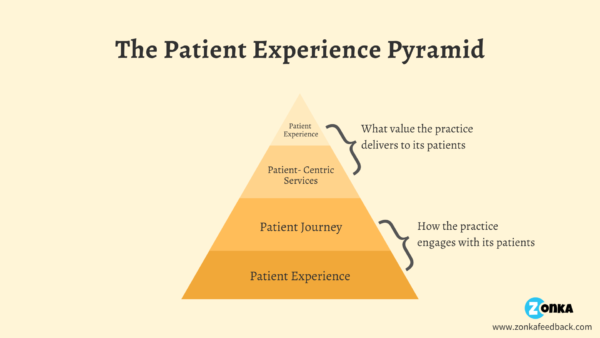Healthcare financing is a topic that affects everyone, regardless of age, gender, or socioeconomic status. It refers to the various methods by which individuals and organizations pay for medical services, including insurance plans, government programs, and out-of-pocket expenses. Whether you are seeking routine check-ups or complex surgeries, understanding healthcare financing is crucial to ensuring that you receive the care you need without breaking the bank.

Healthcare Financing Models
When it comes to financing healthcare, there are several models that countries can adopt. In this section, we will explore three main models: public financing, private financing, and out-of-pocket payments.
Public Financing
Public financing is a model in which the government provides funding for healthcare services. This can be done through taxes, social insurance programs, or other government revenues. In this model, healthcare services are often provided free of charge or at a reduced cost to citizens. Public financing can be beneficial in ensuring that healthcare services are accessible to all, regardless of income or social status.
Private Financing
Private financing is a model in which individuals or private organizations provide funding for healthcare services. In Africa, nearly 60 percent of healthcare financing comes from private sources. This can be done through private insurance plans or out-of-pocket payments. In this model, individuals often have more control over the healthcare services they receive and can choose to receive care from private healthcare providers. However, private financing can also result in unequal access to healthcare services, as those who cannot afford private insurance or out-of-pocket payments may be unable to access necessary care.
Out-of-Pocket Payments
Out-of-pocket payments are a model in which individuals pay for healthcare services directly, without the assistance of insurance or government funding. This model is common in low-income countries where public financing is limited. Out-of-pocket payments can be a significant financial burden for individuals and can result in unequal access to healthcare services.
Healthcare Funding Allocation
When it comes to healthcare financing, one of the most critical aspects is the allocation of funds. As a healthcare provider, you need to ensure that the resources you have are distributed efficiently and effectively. This section will discuss resource distribution, budgeting, and planning.

Resource Distribution
Resource distribution is the process of allocating funds and other resources to different areas of healthcare. It involves determining the needs of each department, prioritizing those needs, and allocating resources accordingly. A well-designed resource distribution plan can help you optimize the use of resources and improve patient outcomes.
To ensure that resources are distributed effectively, you need to have a clear understanding of your organization’s goals and objectives. You also need to assess the needs of each department and determine which areas require the most resources. This can be done through regular assessments and evaluations.
Budgeting and Planning
Budgeting and planning are critical components of healthcare financing. A well-designed budget can help you allocate resources more effectively, reduce waste, and improve patient outcomes. When creating a budget, you need to consider all of the costs associated with healthcare, including salaries, equipment, supplies, and facilities.
To create an effective budget, you need to have a clear understanding of your organization’s financial goals and objectives. You also need to assess the needs of each department and determine which areas require the most funding. This can be done through regular assessments and evaluations.
Challenges in Healthcare Financing
Healthcare financing is a complex and challenging task that requires careful planning and management. There are several challenges that healthcare providers and policymakers face when it comes to financing healthcare services. In this section, we will discuss some of the most significant challenges in healthcare financing.
Cost Containment

One of the most significant challenges in healthcare financing is cost containment. Healthcare costs have been rising steadily over the years, and it has become increasingly difficult to keep them under control. The rising costs of healthcare services can be attributed to several factors, including advances in medical technology, an aging population, and an increase in chronic diseases.
To address the challenge of cost containment, healthcare providers and policymakers must focus on improving the efficiency of healthcare delivery. This can be achieved through the use of technology, such as electronic medical records and telemedicine, which can help reduce administrative costs and improve patient outcomes.
Equity and Access
Another challenge in healthcare financing is ensuring equity and access to healthcare services. Healthcare services should be accessible to all individuals, regardless of their income or social status. However, this is not always the case, and many people are unable to access the healthcare services they need.
To address this challenge, healthcare providers and policymakers must focus on improving access to healthcare services. This can be achieved through the implementation of universal healthcare coverage, the expansion of healthcare facilities and services in underserved areas, and the development of programs to address the social determinants of health.
Efficiency
Efficiency is another significant challenge in healthcare financing. Healthcare providers must find ways to deliver high-quality healthcare services while keeping costs under control. This can be achieved through the use of evidence-based practices, the implementation of quality improvement initiatives, and the adoption of innovative healthcare delivery models.

To improve efficiency, healthcare providers and policymakers must focus on reducing waste and eliminating unnecessary procedures. This can be achieved through the use of data analytics and other tools to identify areas for improvement and streamline healthcare delivery processes.
From the above perspectives, healthcare financing is a complex and challenging task that requires careful planning and management. Addressing the challenges of cost containment, equity and access, and efficiency is critical to ensuring that individuals have access to high-quality healthcare services.
Healthcare Financing Reforms
As healthcare costs continue to rise, governments and healthcare organizations are looking for ways to reform healthcare financing to ensure that everyone has access to affordable and quality healthcare. Some of the key healthcare financing reforms include policy changes and innovative financing mechanisms.
Policy Changes
Policy changes are one of the most important ways to reform healthcare financing. Governments can introduce policies to increase funding for healthcare, improve healthcare delivery, and reduce healthcare costs. Some of the policy changes that have been introduced in recent years include:
- Universal healthcare coverage: Governments can introduce policies to ensure that everyone has access to healthcare, regardless of their income or social status. This can be done through the introduction of universal healthcare coverage, which provides healthcare services to everyone at little or no cost.
- Health insurance reform: Governments can introduce policies to reform health insurance, making it more affordable and accessible to everyone. This can be done through the introduction of subsidies for low-income families, tax credits for individuals who purchase health insurance, and the expansion of Medicaid.
- Price controls: Governments can introduce policies to regulate the prices of healthcare services and medications, making them more affordable for everyone. This can be done through the introduction of price controls, which limit the amount that healthcare providers can charge for their services.
Innovative Financing Mechanisms
Innovative financing mechanisms are another way to reform healthcare financing. These mechanisms involve the use of new and innovative financing models to fund healthcare services. Some of the innovative financing mechanisms that have been introduced in recent years include:
- Social impact bonds: Social impact bonds are a new type of financing model that involves private investors providing funding for healthcare programs. If the program is successful in achieving its goals, the investors receive a return on their investment.
- Microfinance: Microfinance involves the provision of small loans to individuals and small businesses to help them pay for healthcare services. This can be particularly useful for individuals who do not have access to traditional forms of financing.
- Crowdfunding: Crowdfunding involves the use of online platforms to raise funds for healthcare services. This can be particularly useful for individuals who need to raise funds for expensive medical treatments.
Impact of Technology on Healthcare Financing
Advancements in technology have had a significant impact on healthcare financing. The incorporation of technology has led to increased efficiency, improved patient outcomes, and reduced costs. Here are some of the ways technology has impacted healthcare financing:
Telemedicine
Telemedicine has revolutionized the healthcare industry by providing remote access to healthcare services. This technology has enabled patients to receive medical care from the comfort of their homes, reducing the need for hospital visits and associated costs. Telemedicine has also improved patient outcomes by providing early intervention and reducing the risk of complications.
Health Informatics
Health informatics involves the use of technology to manage and analyze healthcare data. This technology has enabled healthcare providers to track patient outcomes, identify areas for improvement, and optimize resource allocation. Health informatics has also facilitated the development of personalized treatment plans, improving patient outcomes and reducing costs.

Electronic Health Records
Electronic health records (EHRs) have replaced traditional paper-based medical records, providing healthcare providers with real-time access to patient data. This technology has reduced administrative costs associated with record-keeping and improved patient outcomes by enabling healthcare providers to make informed decisions based on accurate and up-to-date information.
Generally, technology has had a significant impact on healthcare financing, improving efficiency, reducing costs, and improving patient outcomes. By incorporating technology into healthcare financing, healthcare providers can optimize resource allocation, reduce administrative costs, and improve patient care.
Global Healthcare Financing Trends
As healthcare costs continue to rise globally, financing healthcare has become a major concern for governments, healthcare providers, and patients alike. Here are some global healthcare financing trends that are shaping the industry:
International Comparisons
When it comes to healthcare financing, there are significant differences between countries. For example, in some countries, healthcare is financed through taxes, while in others, it is funded through private insurance. The United States, for instance, has a predominantly private healthcare system, while countries like Canada and the United Kingdom have publicly funded healthcare systems. Many African countries, in comparison, have out-of-pocket systems due to limited financial resources.
According to a report by the World Health Organization (WHO), countries that spend more on healthcare do not necessarily have better health outcomes. For instance, the United States spends more on healthcare per capita than any other country, yet it has a lower life expectancy than many other developed countries.

Emerging Economies
Emerging economies are facing unique challenges when it comes to healthcare financing. These countries often have limited resources and are struggling to provide basic healthcare services to their populations.
One solution that is gaining popularity is digital health, specifically mobile health (mHealth) technology. mHealth allows patients in remote areas to access healthcare services through their mobile devices. This technology is particularly useful in countries where there is a shortage of healthcare providers.
Another trend in emerging economies is the use of microfinance to fund healthcare services. Microfinance involves providing small loans to individuals or groups who do not have access to traditional banking services. These loans can be used to pay for healthcare services or to start healthcare-related businesses.
Related Posts:
Healthcare Financing and Patient Outcomes
When it comes to healthcare financing, patient outcomes are a crucial factor to consider. Patient outcomes refer to the results of medical treatment, including the patient’s quality of care and satisfaction with their experience.
Quality of Care
Healthcare financing can impact the quality of care patients receive. For example, if a hospital is underfunded, it may not have the resources to provide the best treatments or hire enough staff to care for patients adequately. On the other hand, if a hospital is well-financed, it can invest in the latest medical technologies and attract top healthcare professionals.
In addition, healthcare financing can affect the accessibility of care. Patients with limited financial resources may not be able to afford the best healthcare, leading to poorer outcomes. Therefore, it is essential to ensure that healthcare financing is distributed equitably to provide all patients with access to high-quality care.
Patient Satisfaction
Patient satisfaction is another crucial factor in healthcare outcomes. Patients who are satisfied with their care are more likely to follow their treatment plans and have better health outcomes. Financing can impact patient satisfaction in several ways.

For example, if a hospital is well-funded, it may be able to provide more comfortable and attractive facilities, such as private rooms or comfortable waiting areas. Additionally, well-funded hospitals can invest in staff training to ensure that patients receive excellent customer service and care.
Healthcare financing plays a significant role in patient outcomes, including the quality of care and patient satisfaction. It is essential to ensure that healthcare financing is distributed equitably to provide all patients with access to high-quality care, regardless of their financial resources.
Future of Healthcare Financing
As healthcare costs continue to rise, the future of healthcare financing is becoming increasingly important. Here are two key areas to watch in the coming years:
Predictive Analytics
Predictive analytics is a tool that can help healthcare providers forecast future healthcare costs. By analyzing data from past healthcare claims, providers can better predict how much they will need to spend on healthcare in the future. This can help them make more informed decisions about how to allocate resources and plan for future expenses.
One way predictive analytics is being used in healthcare financing is through population health management. By analyzing data on a population level, healthcare providers can identify high-risk patients and provide targeted interventions to prevent costly health events from occurring.
Sustainable Practices
Sustainable healthcare financing is all about finding ways to reduce costs while maintaining high-quality care. This can be achieved through a variety of practices, including:
- Telemedicine: By providing virtual care, healthcare providers can reduce costs associated with in-person visits.
- Preventive care: By focusing on preventive care, healthcare providers can reduce the need for expensive treatments down the line.
- Value-based care: By focusing on outcomes rather than the volume of services provided, healthcare providers can reduce costs while still providing high-quality care.
Overall, the future of healthcare financing is all about finding ways to reduce costs while maintaining high-quality care. By embracing predictive analytics and sustainable practices, healthcare providers can help ensure that healthcare remains accessible and affordable for everyone.

